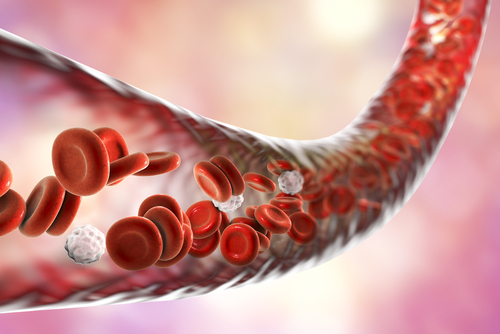Rituxan May Help Treat Aorta Inflammation in AAV, Case Report Suggests
Written by |

In the rare event that ANCA-associated vasculitis affects a large blood vessel like the aorta, treatment with Rituxan (rituximab) appears to improve symptoms and reduce inflammation, a case report shows.
The study, “Aortitis caused by antineutrophil cytoplasmic antibodies (ANCA)-associated vasculitis: a case-based review,” was published in Rheumatology International.
ANCA-associated vasculitis is a collection of autoimmune disorders that cause abnormal blood vessel inflammation (vasculitis) associated with the production of anti-neutrophil cytoplasmic autoantibodies, or ANCA.
The disease normally affects small blood vessels, but in rare cases, medium and large blood vessels may be affected. Involvement of the aorta — the biggest artery in the body — is even more rare.
Researchers in Minnesota now presented the case of a 50-year-old male with ANCA vasculitis involving the aorta. The patient was hospitalized with chest pain, difficulty breathing, fever, muscle pain, night sweats, chills, and skin rash. He had had the symptoms for two weeks.
A physical examination showed normal blood pressure, but the patient’s heart rate was fast and irregular. The individual was obese and had mild swelling in the ankles. The lab exams showed an excess of white blood cells, slightly elevated platelets, and reduced hemoglobin, as well as C-reactive protein, an inflammatory marker.
Imaging exams showed fluid accumulation between the heart and the sac surrounding it. Those exams also showed an enlarged aorta at different points, abnormally sized lymph nodes, and lung nodules.
The man had high levels of ANCAs and other autoantibodies, including antinuclear autoantibodies and rheumatoid factor. He was diagnosed with aortitis — inflammation of the aorta — with the possibility of rheumatoid arthritis, ANCA-associated vasculitis, or giant cell arteritis as comorbidities, or other associated diseases.
The patient was given high doses of the steroid prednisone, which reduced the accumulation of fluid in the heart, and the skin rash. However, lab results remained abnormal, and the aorta remained enlarged. The doctors started treatment with Actemra (tocilizumab) — a therapy for arthritis — but obtained no significant response after 12 weeks.
This lead to a final diagnosis of ANCA-related aortitis and treatment with three courses of Rituxan, given six months apart. After treatment with the antibody, the fatigue, night sweats, and chest pain lessened. The inflammatory markers diminished, and the aorta returned to average size. This allowed the physicians to reduce the dose of prednisolone.
Since ANCA-related aortitis is an infrequent manifestation of ANCA-associated vasculitis, it took more than a year to diagnose and treat the patient correctly.
There are 10 other cases of ANCA-related aortitis reported in the literature. Patients were between 42 and 73 years old at the time of diagnosis.
“While more common types of vasculitides should be initially considered when evaluating a patient with aortitis, [ANCA-associated vasculitis] should also be among the differentials,” the researchers said.
Other patients responded to different immunosuppressants, mainly cyclophosphamide.
“This is the first reported case of [ANCA]-related aortitis that was successfully treated with rituximab, which should probably be considered as first-line therapy for such rare presentation,” the investigators concluded.





